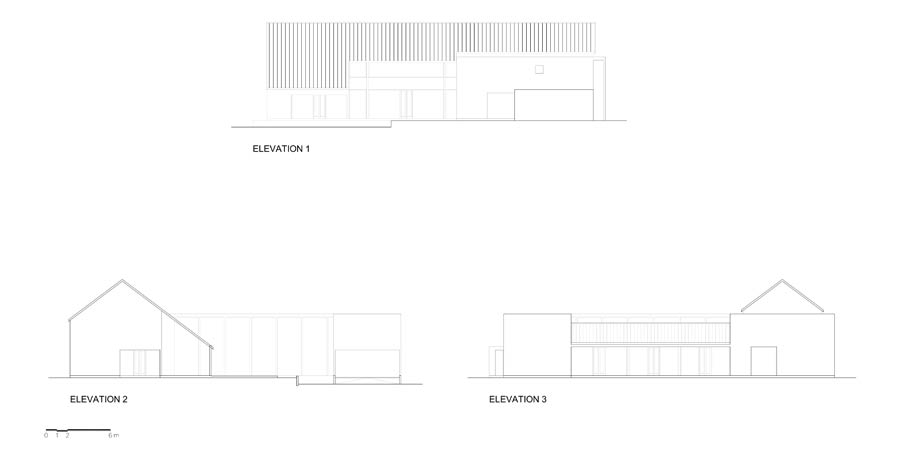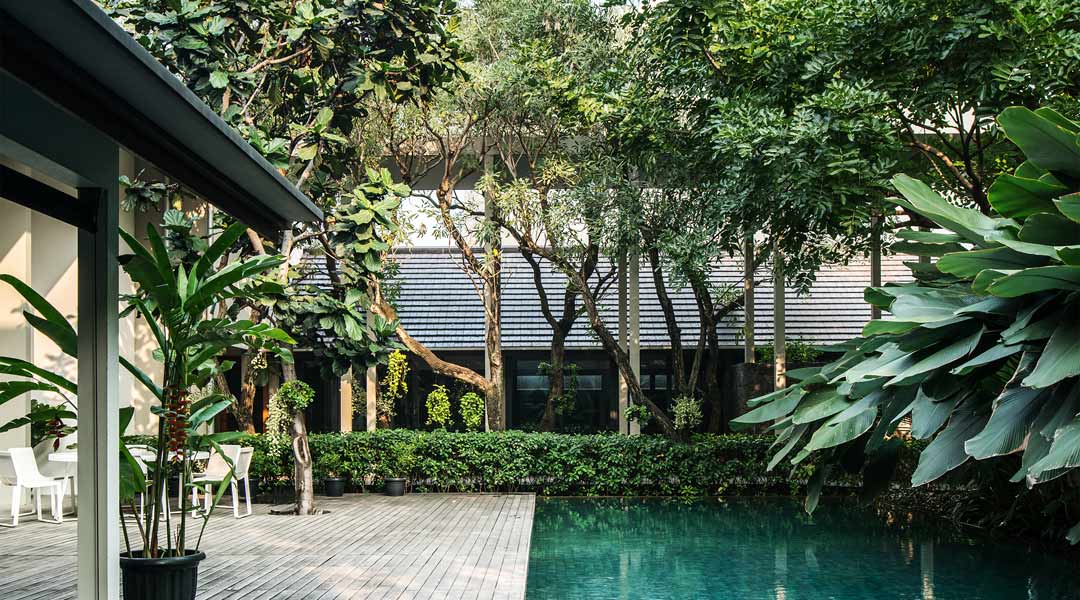
A forest-like entrance marks this Jakarta house by Tan Tik Lam
Tucked in a corner of a small residential development in Jakarta, the house is set back generously by at least 12 meters from the street and shrouded by wild banana plants lining the perimeter wall. It stands on a 1000-square-meter L-shaped site, a composite of two lots. One enters the premises through gray laser-cut steel doors on the left side of a white boxy garage separate from the main house structure.
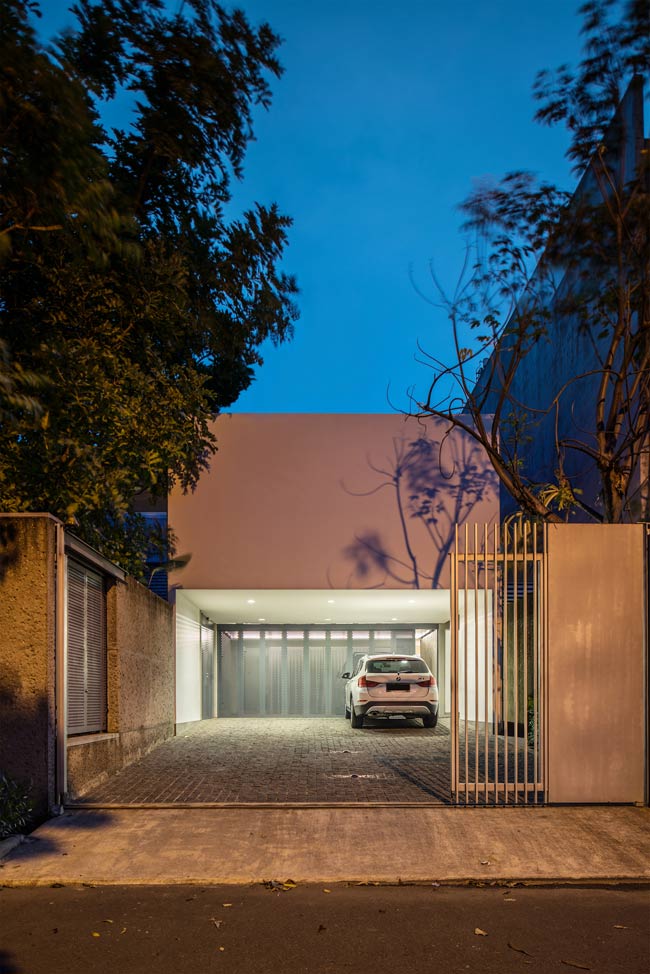
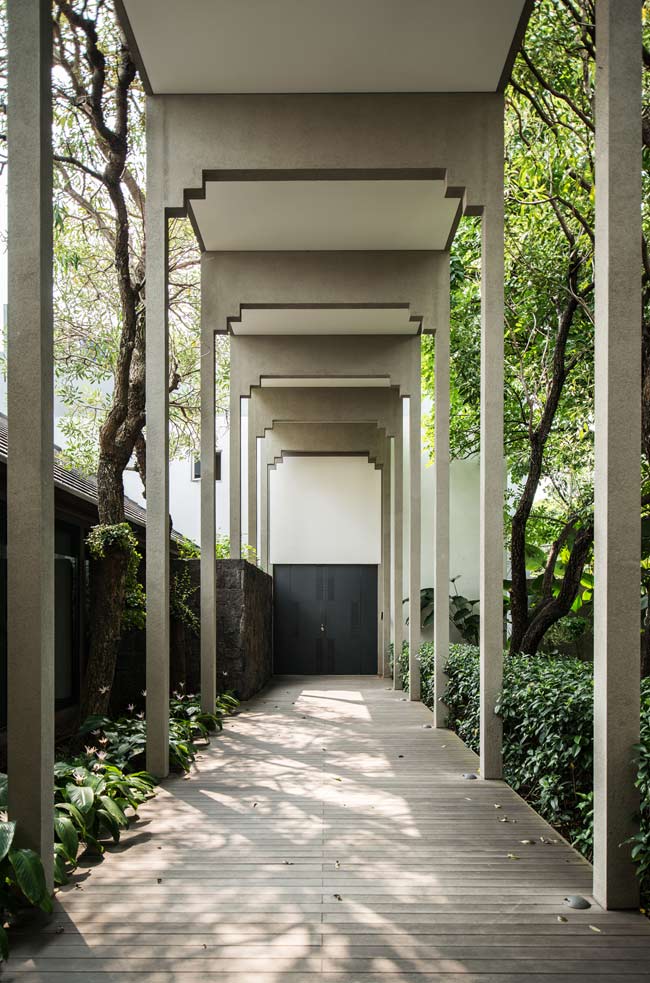
Minimalism is shed at the threshold. The garage’s austere severity is succeeded by a sensory walk through a narrow arcade. Seven concrete arches standing 6 meters tall, spanning 3 meters wide, and spread along the 17-meter-long walkway repeat the same stepped corner details to the front door.
“The owner wanted a forest-like entrance, which is why we decided on this tall corridor,” said architect Tan Tik Lam. Slender columns echo the svelte trunks of nearby trees. The rhythmic arrangement of the organic and the rectilinear is also impressed on the decking as shadows are cast throughout the day.
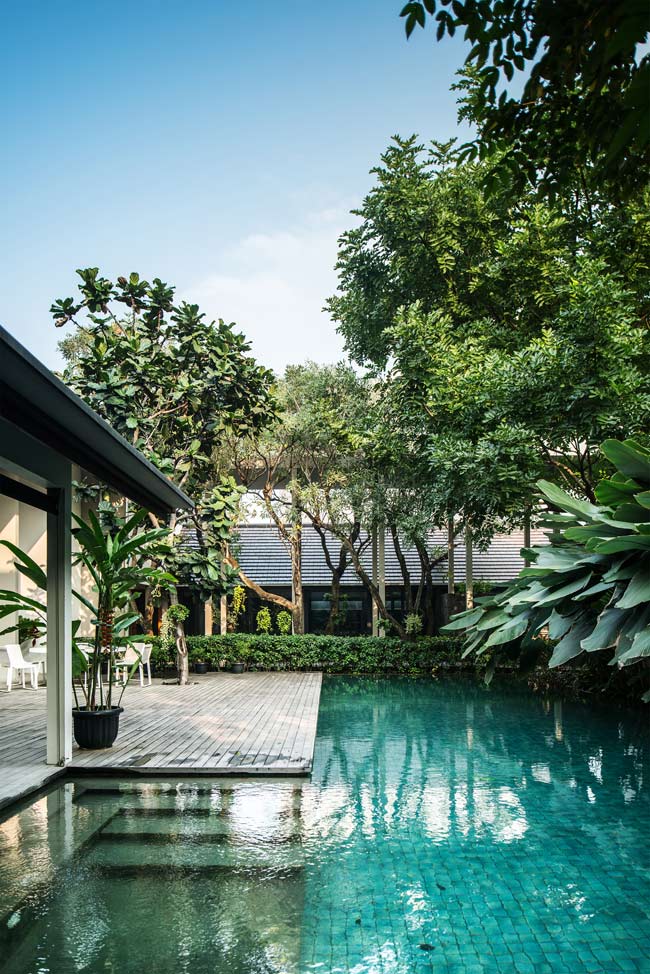
While the path is hedged by shrubs and leads only to the door, those who traverse it can look to their right for a panorama of the house’s outdoor spaces—the garden, the pool, and the deck. This 15-second-walk is where strangers transition to become guests, and if they visit often enough, friends. It also introduces guests to the culture of those living inside.
“The family keeps their Chinese traditions strong so we worked that in through the terracotta-colored floor in the living spaces and the geometric entrance arches, referencing the old temple gateways,” added Tan.
The house’s entrance foyer forks the path. Staying on track brings one upstairs. Turning right leads to the office wing, and left to the living and dining areas. With sliding doors on both sides for cross-ventilation, the 60-square-meter great room opens to the pool deck outside, increasing the social space with an additional 148 square meters. The room also serves as a buffer between the entrance and the master bedroom on the left edge of the house. This expansive space where people, indoors, outdoors, land, and water converge is the pause in the house’s processional narrative.
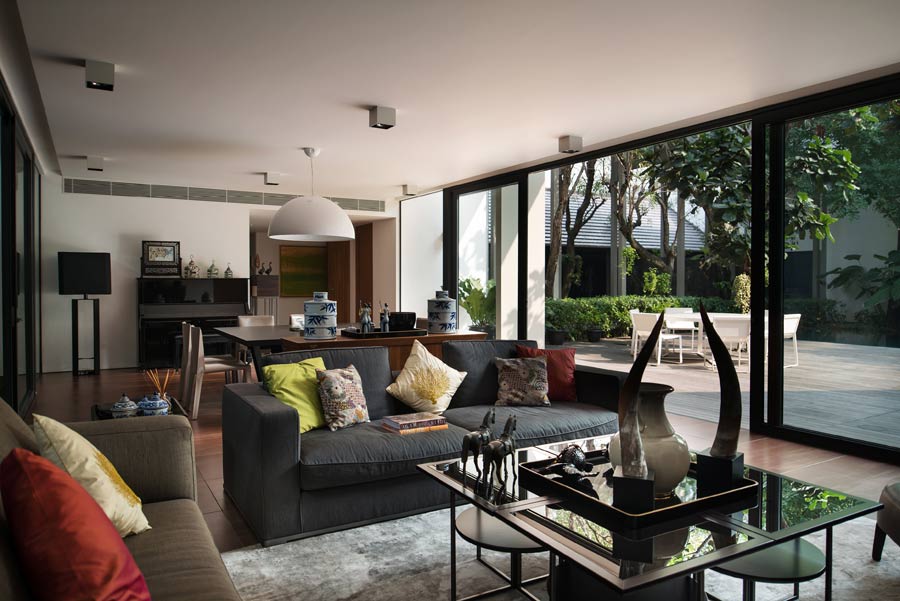

Just like the space beside it, the master bedroom opens to the deck, giving the homeowners their own little poolside veranda. A 10-meter-long eave, with an incline of almost 40 degrees, segregates this portion from the more public area of the deck. Not only does the eave delineate the north-facing space and shelter it from direct sunlight, it also keeps the bedroom and the “outdoor living room” away from the prying eyes of neighbors who built a very tall house in the lot across.

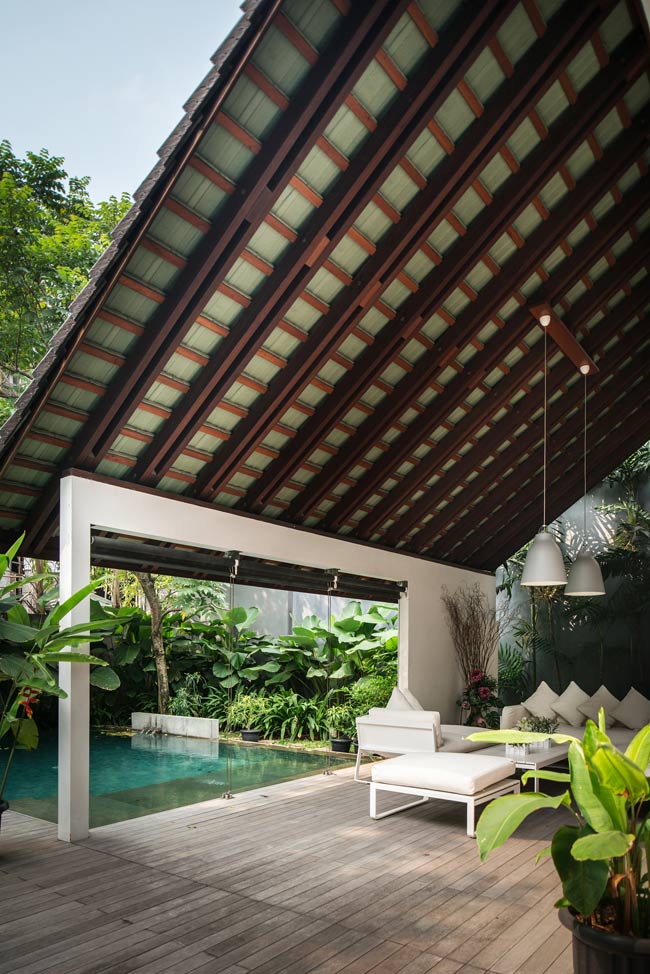
Many in the village opt for flashbang arrivals in the form of double-height Corinthian columns, borne not of Hellenophilia but of the desire to project opulence. In contrast, the house by Tan Tik Lam encloses verdure, family history, and a memorable procession. And the introduction to the home and the people who built it only happens when one is invited in. ![]()
READ MORE: Find out what makes an authentic ecolodge
Photographed by nilai asia
